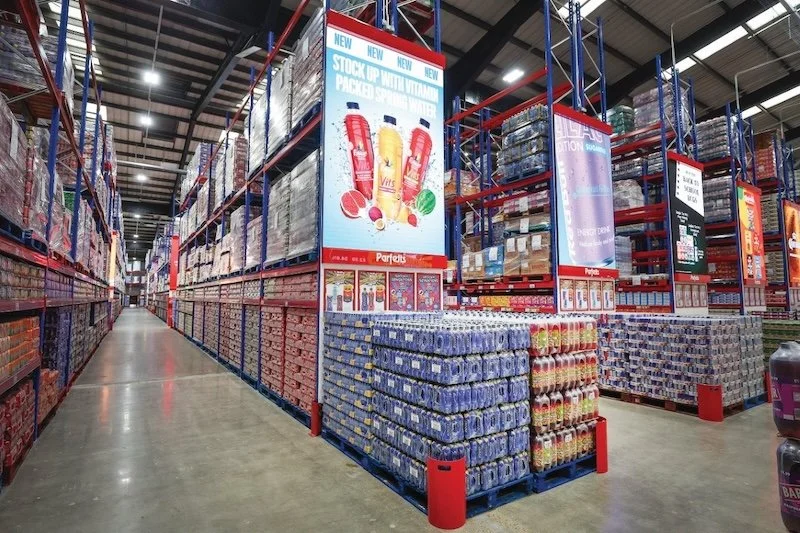The future of retail: how technology and consumer behaviour are shaping the industry
The retail sector has undergone dramatic changes over the past decade, driven by rapid technological advancements and shifting consumer behaviours.
As technology continues to evolve and consumer preferences shift, retailers must adapt to stay competitive in a landscape that is both exciting and challenging.
This article explores the key trends that are shaping the future of retail and offers insights into how retailers can navigate these changes effectively.
The role of technology in retail transformation
E-commerce and Omnichannel Strategies
One of the most significant shifts in retail has been the rise of e-commerce. Online shopping has become a staple for many consumers, providing convenience and a vast selection of products at their fingertips.
However, this shift has also led to the need for a seamless integration between online and offline channels. Omnichannel strategies, which combine physical stores with online platforms, are now essential for a cohesive customer experience.
Retailers are increasingly investing in technologies that bridge the gap between their digital and physical presence.
For example, brands like Walmart and Target have successfully integrated their online and in-store operations, offering features such as buy-online, pick-up-in-store (BOPIS) and seamless returns.
This integration not only enhances the customer experience but also helps retailers manage inventory more efficiently.
Artificial Intelligence and Personalisation
Artificial Intelligence (AI) is revolutionizing the retail industry by enabling a higher level of personalisation.
AI algorithms analyze vast amounts of data to provide tailored recommendations and enhance customer interactions. This personalisation extends to various aspects of the shopping experience, from product recommendations to customer service interactions.
For instance, Amazon uses AI driven algorithms to suggest products based on customers' previous purchases and browsing history. This level of personalisation not only increases the likelihood of a sale but also enhances customer satisfaction by making the shopping experience more relevant and engaging.
Augmented Reality (AR) and Virtual Reality (VR)
Augmented reality (AR) and virtual reality (VR) are transforming the way consumers interact with retail products. AR allows customers to visualise products in their own space before making a purchase, while VR offers immersive shopping experiences that can simulate store environments or product trials.
Sephora, for example, has leveraged AR technology to offer a virtual makeup try-on feature through its app.
This innovation allows customers to see how different products will look on their skin without physically applying them, making the shopping experience more interactive and enjoyable.
In a bold move to redefine retail engagement, Maybelline New York partnered with creative tech studio FFFACE.ME to unveil the world’s largest AR Mirror - a 4,000-square metre interactive installation on the facade of mall. The activation allowed passersby to see themselves in real-time via a massive augmented reality screen, trying on Maybelline’s new mascara through a virtual AR filter - no app or device needed.
Automation and Robotics
Automation and robotics are becoming increasingly prevalent in retail operations.
From warehouses to storefronts, these technologies are streamlining processes and improving efficiency. In warehouses, robots are used for tasks such as sorting and packaging, which accelerates order fulfillment and reduces human error.
Amazon's fulfillment centres are a prime example of this trend. The company uses a combination of robots and automated systems to manage inventory and process orders quickly.
Additionally, some retailers are experimenting with automated checkout systems to speed up the payment process and reduce the need for human cashiers.
Changing consumer behaviour
Rise of the Conscious Consumer
Today's consumers are more informed and conscientious about their purchasing decisions. Sustainability and ethical considerations are playing an increasingly important role in shaping consumer preferences.
Many shoppers are actively seeking out brands that demonstrate a commitment to environmental and social responsibility.
Brands like Patagonia and The Body Shop are leading the way in this regard, incorporating sustainable practices and transparent supply chains into their business models. These companies not only attract environmentally conscious consumers but also build brand loyalty by aligning with their customers' values.
Demand for Convenience
Convenience has become a top priority for consumers, driven by fast-paced lifestyles and technological advancements. Retailers are responding to this demand by offering services that make shopping more convenient, such as same-day delivery and subscription-based shopping options.
Subscription services, like those offered by companies such as Dollar Shave Club and Blue Apron, cater to consumers' desire for convenience by delivering products directly to their doorsteps on a regular basis.
Similarly, same-day delivery options from retailers like Amazon Prime or Target’s Shipt service ensure that customers receive their orders quickly, enhancing the overall shopping experience.
Shift to Experiential Retail
As competition intensifies, many retailers are focusing on creating memorable and engaging shopping experiences rather than just selling products.
This shift towards experiential retail involves offering unique in-store events, interactive displays, and immersive brand experiences that resonate with consumers on an emotional level.
Pop-up shops and temporary installations have gained popularity as a way for brands to create buzz and engage with customers in innovative ways.
For example, the success of temporary art installations and interactive brand experiences by companies like Nike and Glossier demonstrates the power of experiential retail in attracting and retaining customers.
Impact of Social Media
Social media has transformed the way consumers discover and engage with retail brands. Platforms like Instagram and TikTok play a crucial role in shaping consumer behaviour by influencing purchasing decisions and driving trends.
Retailers are leveraging social media to reach their target audiences through targeted advertising, influencer partnerships, and user-generated content.
For instance, many brands collaborate with social media influencers to promote their products and create authentic connections with potential customers.
Additionally, the rise of social commerce, where consumers can purchase products directly through social media platforms, has further blurred the lines between social media and retail.
Challenges facing the retail industry
Supply Chain Disruptions
The global retail landscape is not without its challenges. Supply chain disruptions, often caused by geopolitical events or global crises, can significantly impact retailers' ability to source and deliver products.
The Covid-19 pandemic, for example, highlighted vulnerabilities in global supply chains and prompted many retailers to reevaluate their logistics and inventory management strategies.
To mitigate these risks, retailers are exploring strategies such as diversifying their supply chains, investing in local sourcing, and adopting more agile supply chain practices.
Implementing technologies like residential proxies can also help retailers navigate supply chain complexities by providing secure and reliable data access, which is crucial for maintaining operational efficiency.
Adapting to Rapid Technological Changes
The rapid pace of technological advancement presents both opportunities and challenges for retailers.
While new technologies offer innovative solutions, they also require significant investments and adaptations. Retailers must stay abreast of emerging technologies and trends to remain competitive and relevant in the market.
Companies that fail to adapt to technological changes risk falling behind their competitors. For example, traditional retailers that have not embraced e-commerce or digital transformation may struggle to compete with online first brands that have mastered these technologies.
Data Privacy and Security Concerns
As retailers increasingly rely on data to drive personalised experiences and optimise operations, data privacy and security have become critical concerns. Protecting consumer data from breaches and unauthorized access is essential for maintaining customer trust and compliance with regulations.
Retailers must implement robust data security measures, such as encryption and secure data storage solutions, to safeguard sensitive information. Additionally, transparent data privacy policies and practices can help build consumer trust and demonstrate a commitment to protecting their personal information.
Opportunities for retailers
Embracing Innovation
To thrive in the evolving retail landscape, retailers must embrace innovation and continuously seek new ways to enhance their operations and customer experiences. Investing in cutting-edge technologies and exploring new business models can provide a competitive edge and drive growth.
For instance, technologies like AI, AR, and robotics offer opportunities for retailers to improve efficiency, personalize interactions, and create engaging experiences. Retailers that are proactive in adopting and integrating these technologies are likely to see significant benefits.
Building Stronger Customer Relationships
Personalisation and customer engagement are key to building lasting relationships with consumers. By leveraging data and insights, retailers can tailor their offerings and communications to meet individual preferences and needs.
Loyalty programmes, personalised marketing strategies, and targeted promotions are effective ways to deepen customer relationships and foster brand loyalty. Retailers should also focus on creating positive and memorable experiences that resonate with customers on an emotional level.
Expanding into Emerging Markets
Emerging markets present significant growth opportunities for retailers looking to expand their reach. With rising incomes and increasing consumer spending, these markets offer new avenues for growth and revenue generation.
Retailers should conduct thorough market research and develop strategies tailored to the unique needs and preferences of consumers in emerging markets. Successful expansion requires a deep understanding of local cultures, regulatory environments, and competitive dynamics.
Conclusion
The future of retail is being shaped by a combination of technological advancements and changing consumer behaviours.
As the industry evolves, retailers must adapt to new trends and challenges to stay competitive and relevant. By embracing innovation, focusing on personalisation, and navigating emerging opportunities, retailers can position themselves for success in a dynamic and ever changing retail landscape.
The key to thriving in this environment lies in staying ahead of the curve, leveraging technology effectively, and understanding the evolving needs of consumers. Retailers that can successfully navigate these changes will not only survive but also flourish in the future of retail.
For retailers looking to optimise their operations and enhance their digital presence, tools like residential proxies can provide secure and reliable access to crucial data, helping to overcome challenges and seize opportunities in the retail sector.
By integrating these technologies and strategies, retailers can build a stronger, more resilient business that meets the demands of today's consumers and prepares for the future.
































Continue reading…